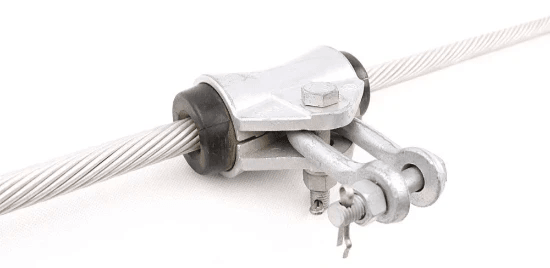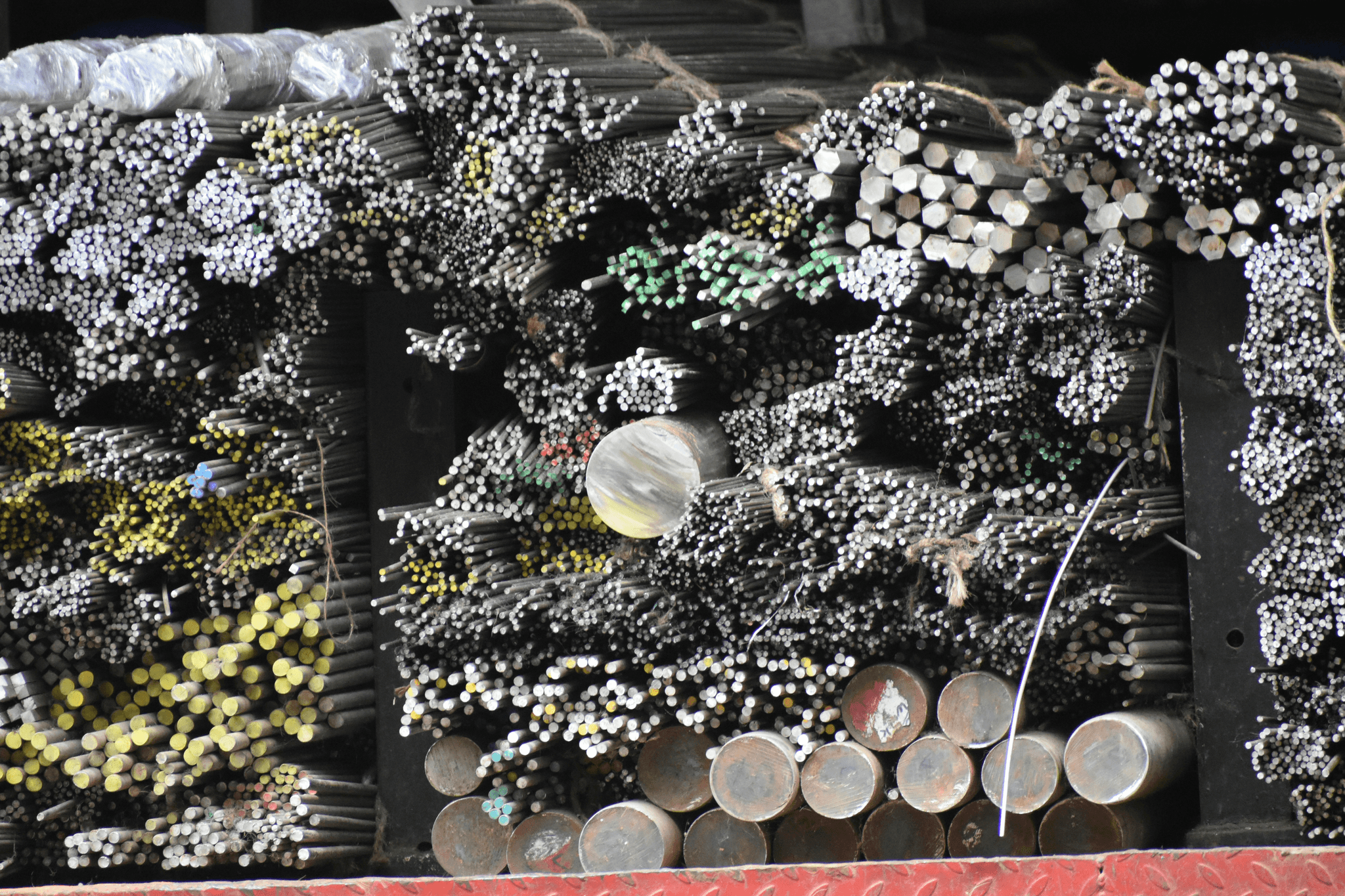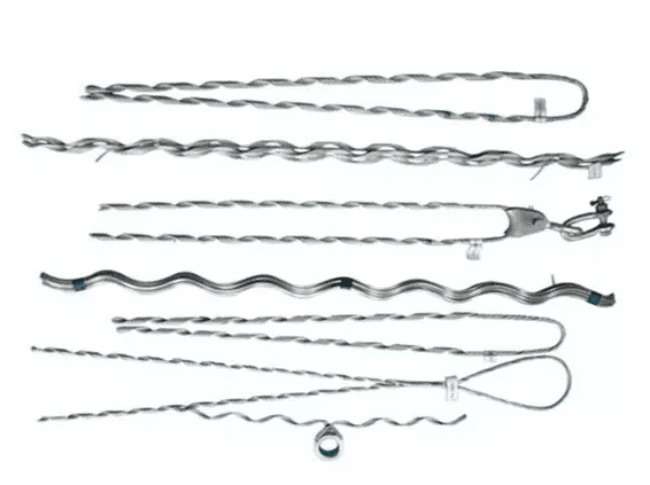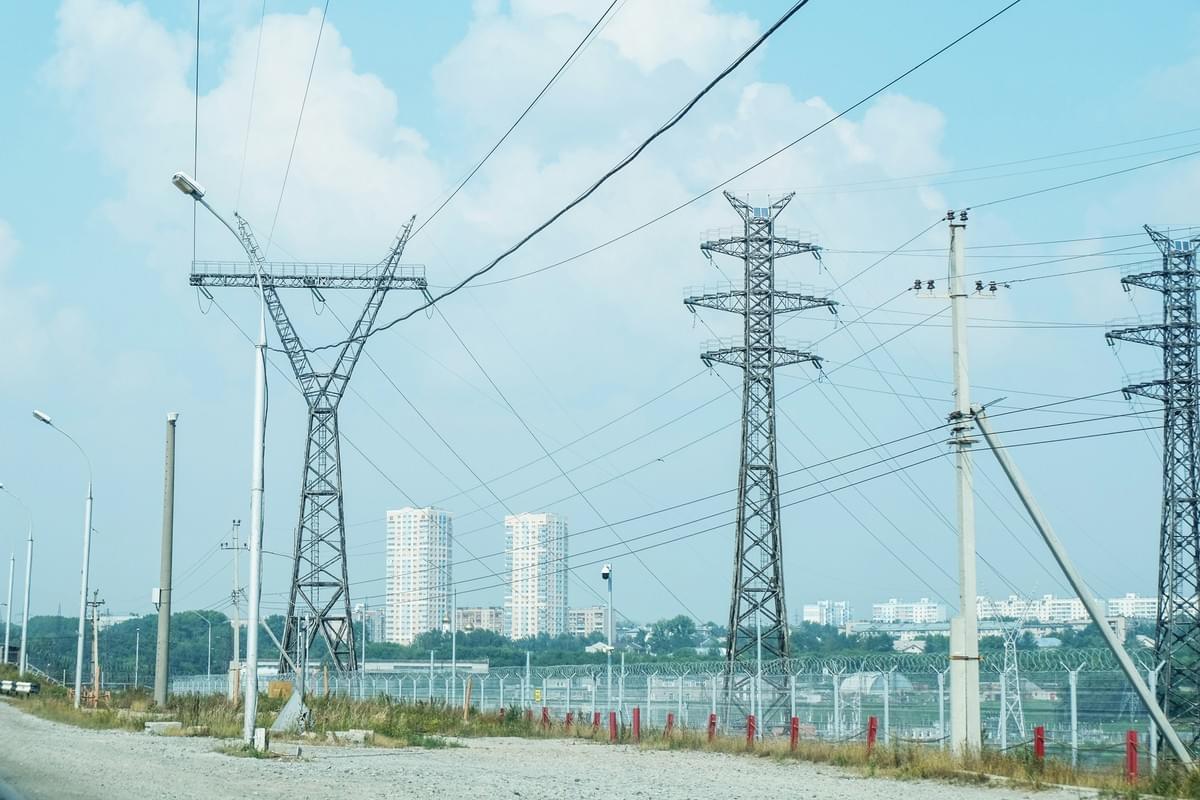Introduction

In the world of cable management, lashing wire clamps are often unsung heroes. These small but mighty components play a pivotal role in securing lashing fiber optic cables, ensuring that your setup remains organized and efficient. Understanding the importance of these clamps can make a significant difference in both the longevity and performance of your cabling systems.
Understanding the Importance of Lashing Wire Clamps
Lashing wire clamps are essential for maintaining the integrity and stability of lashing types used in various installations. Whether you're working with overhead lines or underground setups, these clamps provide critical support that prevents damage to cables during installation and throughout their operational life. Without proper use of lashing wire clamps, you may encounter issues such as cable sagging or even breakage, which can lead to costly repairs and downtime.
Key Lashing Types for Effective Cable Management
When it comes to effective cable management, understanding different lashing types is crucial. From single-lash to double-lash techniques, each method offers unique advantages depending on your specific application needs. Utilizing the right type of wire lashing not only enhances stability but also simplifies future maintenance tasks associated with your lashing fiber optic cables.
The Role of Spark Fittings in Your Setup
Spark fittings are another vital component that complements lashing wire clamps in any cable management system. These fittings provide secure connections between cables and other equipment while allowing for necessary flexibility during installation and maintenance processes. By integrating spark fittings into your setup alongside quality lashing wire clamps, you ensure a robust infrastructure capable of handling various environmental challenges without compromising performance.
Choosing the Right Lashing Wire Clamp

Selecting the right lashing wire clamp is crucial for ensuring that your lashing fiber optic cable remains secure and performs optimally. With various lashing types available, understanding your project’s specific requirements will help you make an informed decision. The right clamp can prevent damage to cables and enhance the longevity of your installation.
Factors to Consider in Selection
When choosing a lashing wire clamp, several factors come into play that can impact your overall setup. First, consider the diameter of the cable you’re working with; different clamps are designed for specific sizes of lashing fiber optic cable. Additionally, think about environmental conditions such as temperature fluctuations and exposure to moisture, as these can affect material performance over time.
Another important factor is the load-bearing capacity of the clamp; it needs to withstand not only the weight of the cable but also any additional stress from environmental factors or installation methods like wire lashing. Compatibility with existing hardware is also key; ensure that your chosen clamp fits seamlessly into your current setup without requiring extensive modifications. Lastly, budget considerations should guide your selection process—while quality is paramount, there are options available across a range of price points.
Common Materials and Their Benefits
Lashing wire clamps are made from various materials, each offering unique benefits tailored to different applications. Steel clamps are renowned for their strength and durability; they can handle significant loads and resist wear over time, making them ideal for heavy-duty installations involving multiple lashing types. On the other hand, plastic clamps offer lightweight options that are resistant to corrosion—a perfect choice for outdoor setups exposed to moisture.
Aluminum is another popular material due to its excellent strength-to-weight ratio; it provides good resistance against rust while remaining easy to handle during installation processes like cable lashing. Each material brings its own advantages depending on your project’s requirements; therefore, understanding these benefits will help you choose wisely when selecting a suitable lashing wire clamp.
Compatibility with Lashing Fiber Optic Cable
Ensuring compatibility between your selected lashing wire clamp and lashing fiber optic cable is vital for maintaining optimal performance throughout its lifespan. Not all clamps are designed specifically for fiber optic cables; therefore, always check specifications before making a purchase decision. Using an incompatible clamp may result in damage during installation or lead to long-term issues such as signal degradation or physical wear on delicate fibers.
Moreover, consider whether the clamp allows for proper tensioning without over-tightening—this can be particularly critical when dealing with sensitive cables like those used in fiber optics where excessive pressure might cause internal damage or breakage. Ultimately, investing time in understanding compatibility will pay off by prolonging both equipment lifespan and system reliability.
Preparing for Installation

Before diving into the world of lashing wire clamps and lashing fiber optic cables, it’s essential to prepare adequately for installation. The right tools and techniques will ensure a smooth process and optimal performance of your cable management system. Let’s break down what you’ll need to get started.
Tools Required for Lashing Wire Installation
To install your lashing wire clamp effectively, you'll need a few key tools in your arsenal. First, a sturdy pair of wire cutters is essential for trimming excess lashing wire after securing your cables. Additionally, having a tensioning tool can help ensure that the lashing wire is tight enough without overdoing it—nobody wants to deal with the aftermath of over-tightening issues!
Don’t forget about safety gear like gloves and goggles; they’re not just for show! A good pair of gloves will protect your hands from sharp edges while working with wires, and goggles will keep debris out of your eyes during installation. With these tools at hand, you're well on your way to effective cable lashing.
Understanding Cable Lashing Techniques
Cable lashing techniques are crucial when working with various lashing types for fiber optic installations. The basic idea involves wrapping the lashing wire around the cables in a consistent pattern to ensure stability and protection against environmental factors. Familiarizing yourself with methods such as spiral or figure-eight wraps can significantly improve the durability of your setup.
Moreover, knowing how much tension to apply during the process is vital; too little might lead to loose cables while too much could damage them—finding that sweet spot is key! Practice makes perfect here, so don’t hesitate to try different techniques until you find what works best for you and your specific application involving lashing fiber optic cable.
Safety Precautions to Keep in Mind
Safety should always be at the forefront when preparing for any installation project involving lashing wire clamps or other equipment. Always inspect your workspace before starting; make sure there are no hazards that could cause accidents or injuries while handling tools or wires.
Moreover, be cautious about electrical safety if you’re working near live wires; turning off power sources can save you from potential shocks or short circuits during installation. Lastly, remember that proper lifting techniques are crucial when moving heavy equipment—your back will thank you later!
Step-by-Step Installation Process

Preparing the Area for Installation
Before diving into the installation of your lashing wire clamp, it's crucial to prepare the area properly. Clear any debris or obstacles that could hinder your work or pose safety risks during cable lashing. Ensuring you have ample space will not only make maneuvering easier but also help prevent accidents while handling tools and materials.
Next, assess the surrounding environment for any potential hazards, such as overhead power lines or unstable surfaces. A clean and organized workspace allows you to focus on using proper lashing techniques without distractions or interruptions. Remember, a little preparation goes a long way in achieving effective wire lashing.
Proper Lashing Wire Techniques
Once your area is prepped and ready, it's time to delve into proper lashing wire techniques that ensure secure installations of your fiber optic cables. Start by selecting an appropriate type of lashing wire that best suits your project requirements—different situations may call for varying lashing types based on environmental conditions and cable specifications.
As you begin the actual cable lashing process, maintain consistent tension on the wire while wrapping it around both the fiber optic cable and any supporting structures. This ensures stability without risking damage to delicate fibers within the cable itself—after all, nobody wants a tangled mess when they’re trying to achieve neat organization!
Finally, make sure you're familiar with how many wraps are needed per section; this helps maintain uniformity throughout your installation while enhancing overall performance. With these techniques under your belt, you'll be well-equipped for securing those cables like a pro!
Securing the Clamp Effectively
With proper techniques in place, securing your lashing wire clamp effectively is paramount for optimal performance and longevity of your setup. Begin by positioning the clamp around both the fiber optic cable and its supporting structure—this ensures everything stays put once tightened.
Carefully tighten each screw or fastening mechanism on the clamp until it feels snug but not overly tight; over-tightening can lead to damage down the line—or worse yet—a complete failure of support! A good rule of thumb is to apply just enough pressure so that there’s no movement yet still allowing some flexibility within components.
After securing everything in place with precision, take a moment to double-check all connections before moving forward with additional installations or adjustments. This attention to detail will pay off big time as you enjoy seamless performance from your newly installed system!
Common Mistakes to Avoid

One of the biggest blunders in wire lashing is over-tightening the lashing wire clamp. While it's essential to secure your cables firmly, cranking down too hard can damage both the cable and the clamp itself. This not only compromises the integrity of your installation but may also lead to premature wear on your lashing fiber optic cable.
Over-tightened clamps can create pressure points that weaken the cable structure, leading to potential failure or signal loss over time. It’s crucial to find that sweet spot where your lashing wire is tight enough for stability but gentle enough not to cause stress on the fibers within. Remember, a snug fit beats a vice grip any day when it comes to effective cable management!
Wrong Clamp Placement Consequences
Another mistake that often goes unnoticed is improper placement of your lashing wire clamps. Positioning them incorrectly can lead to uneven tension across your cabling system, which may result in sagging or even breakage over time. If you place clamps too far apart or in areas where they can't provide adequate support, you're inviting disaster into your setup.
Moreover, incorrect clamp placement can interfere with other components like spark fittings and connectors, leading to connectivity issues and potential downtime for projects reliant on those connections. Always take care when determining where each clamp should go; proper planning will ensure that all parts work harmoniously together without causing unnecessary strain on any single section of your installation.
Neglecting Maintenance of Cable Lashing
Finally, one mistake that's easy to overlook is neglecting maintenance on your cable lashing setup altogether. Just because everything seems fine now doesn’t mean it will stay that way forever! Regular inspections are vital for catching early signs of wear and tear before they escalate into costly repairs or replacements.
Failing to maintain your lashing wire means risking damaged cables due to environmental factors like moisture or corrosion affecting both wires and clamps alike over time. Taking a few moments every so often for routine checks can save you significant headaches down the road—so don’t underestimate this crucial step! Keeping an eye on those little details ensures optimal performance from both your lashing types and overall system longevity.
Maintenance Tips for Longevity

Maintaining your lashing wire clamp and associated equipment is crucial for ensuring the longevity and optimal performance of your lashing fiber optic cable setups. Regular maintenance not only prolongs the life of the components but also enhances safety and efficiency in cable management. By following a few simple guidelines, you can keep your wire lashing practices in top shape.
Regular Inspections for Optimal Performance
Regular inspections are essential to ensure that your lashing wire clamps and fiber optic cables remain in good condition. Check for signs of wear, corrosion, or any damage that could compromise the integrity of your lashing types. This proactive approach allows you to catch potential issues before they escalate into costly repairs or downtime.
During inspections, pay special attention to how well the clamps secure the cables without causing undue stress on the fibers themselves. Loose or improperly placed clamps can lead to cable movement, which may result in performance degradation over time. By keeping a routine inspection schedule, you can maintain optimal performance and extend the lifespan of your lashing wire and related components.
Best Practices in Maintaining Lashing Wire
To maintain your lashing wire effectively, it’s important to follow best practices that promote durability and functionality. First, always store spare lashing wire in a dry environment away from direct sunlight to prevent degradation due to environmental factors. Additionally, when handling lashing fiber optic cable during installation or maintenance, be gentle; excessive force can damage both the wires and their protective sheathing.
Another key practice is ensuring that all connections are clean and free from dust or debris before installation or adjustments are made. This not only helps with securing but also minimizes interference with signal transmission through fiber optic cables. Finally, familiarize yourself with various types of lashing techniques so you can adapt as necessary depending on specific project requirements.
Knowing When to Replace Your Equipment
If you notice persistent issues such as frequent disconnections or degraded signal quality despite proper maintenance practices, it may be time for an upgrade. Worn-out clamps may no longer provide adequate support; therefore, timely replacement is critical.
Additionally, keep track of how long you've been using specific components like clamps and wires; most have a finite lifespan based on usage conditions and frequency of use. If you find yourself constantly adjusting or tightening clamps due to wear-and-tear issues, consider investing in new products designed with enhanced durability features suited for modern applications involving cable lashing techniques. Staying ahead with replacements will ensure that your projects continue running smoothly without unexpected interruptions.
Conclusion
In the intricate world of cable management, mastering lashing fiber optic cable techniques is essential for ensuring optimal performance and longevity. By understanding various lashing types and their applications, you can effectively manage your cables while minimizing risks associated with improper installation. Whether you're a seasoned professional or a DIY enthusiast, honing your skills in wire lashing will undoubtedly elevate your projects.
Mastering Lashing Fiber Optic Cable Techniques
A solid grasp of lashing fiber optic cable techniques allows you to create a reliable and organized setup that withstands the test of time. Familiarizing yourself with different lashing types enables you to choose the most suitable method for your specific project needs, whether it involves overhead installations or underground systems. Remember, effective wire lashing not only improves aesthetics but also enhances the overall functionality of your network.
Elevating Your Projects with Spark Fittings
Integrating spark fittings into your cable management strategy can significantly elevate the quality of your installations. These fittings provide a secure connection that complements the use of lashing wire clamps, ensuring that every component works harmoniously together. By investing in high-quality spark fittings alongside proper lashing techniques, you can enhance both safety and performance in any cabling project.
Ensuring Safe and Effective Wire Lashing Practices
To ensure safe and effective wire lashing practices, it’s crucial to adhere to established guidelines and regularly inspect your installations for wear or damage. Developing a maintenance routine helps identify potential issues before they escalate into costly repairs or replacements—so don’t skip this step! Ultimately, by prioritizing safety and diligence in cable lashing practices, you'll guarantee that your network remains robust and reliable for years to come.

